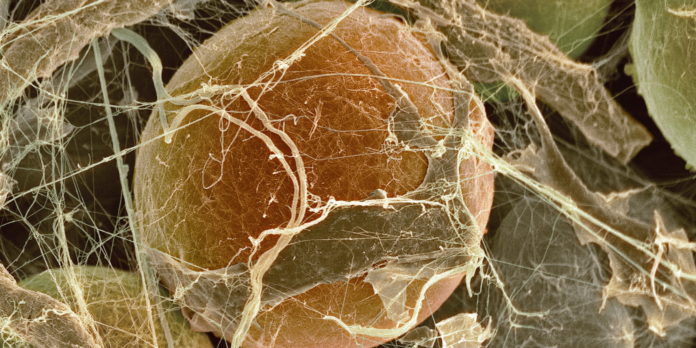
In a potential breakthrough for obesity treatment, an experimental drug was shown to effectively alter the metabolic activity of fat tissue, leading to significant loss of weight and fat in mice. The findings, presented at the Endocrine Society’s 97th annual meeting in San Diego, could lead to the development of novel weight-loss drugs that use the body’s own tissue to promote fat-burning.
Known as GC-1, the drug reportedly speeds up metabolism, or burning off, of fat cells.
“GC-1 dramatically increases the metabolic rate, essentially converting white fat, which stores excess calories and is associated with obesity and metabolic disease, into a fat like calorie-burning brown fat,” said study author Kevin Phillips, PhD, a researcher at Houston Methodist Research Institute, Houston.
The body has different types of adipose tissue that perform various metabolic tasks; included among these are both white and brown fat cells. White fat stores excess calories for release to energy-hungry organs during fasting, whereas brown fat is mostly used to burn calories to produce heat. Until several years ago, scientists thought that only animals and human infants have energy-burning, “good” brown fat.
“It is now clear,” Dr. Phillips said, “that human adults do have brown fat, but appear to lose its calorie-burning activity over time.”
White adipose tissue, or fat, becomes a “metabolic villain,” as Dr. Phillips called it, when the body has too much of it. When we regularly consume more calories than we use, the excess calories build up in white fat, and we become overweight and obese. Too much white fat around the abdomen is linked to metabolic dysfunction, insulin resistance and heart disease.
Some published research has also shown that people who have more brown fat have a reduced risk of obesity and diabetes. In recent years, scientists have become increasingly interested in the possibility of “browning” white fat, or converting it into brown fat.
GC-1 works by activating the receptors for thyroid hormone, which play a role in regulating metabolism–the body’s conversion of food into energy. Thyroid hormone receptors also help with adaptive thermogenesis, in which the body converts excess energy (calories and fat) to heat.
Dr. Phillips said he and other researchers at Houston Methodist Research Institute have tested the drug in hundreds of mice, with partial research funding from the National Institutes of Health. Obese mice, both genetically obese and those with diet-induced obesity, received GC-1 treatment daily.
Genetically obese mice lost weight and more than 50 percent of their fat mass in approximately two weeks, Dr. Phillips’ team reported. Treated mice also showed anti-diabetic effects, such as a sixfold improvement or better in insulin sensitivity (how well the body clears glucose from the bloodstream). He said mice with diet-induced obesity experienced similar improvements.
The drug also induced adaptive thermogenesis in fat cells isolated from mice. Cells grown in culture in a dish, as well as tissue samples taken from obese mice, showed evidence of white-fat browning.
“Our data demonstrate that GC-1 is a novel fat-browning agent that may have use in the treatment of obesity and metabolic disease,” Dr. Phillips said.
The drug has not yet undergone testing for weight loss in humans. GC-1 is being tested in clinical trials for lowering cholesterol, under the name sobetirome. However, Dr. Phillips said the doses of sobetirome used in the cholesterol-lowering studies are much lower than what would be needed for weight loss.
